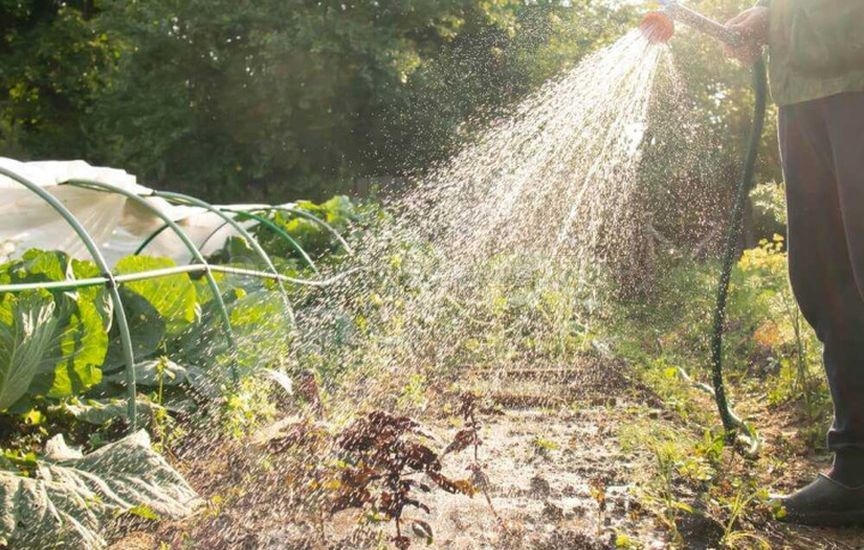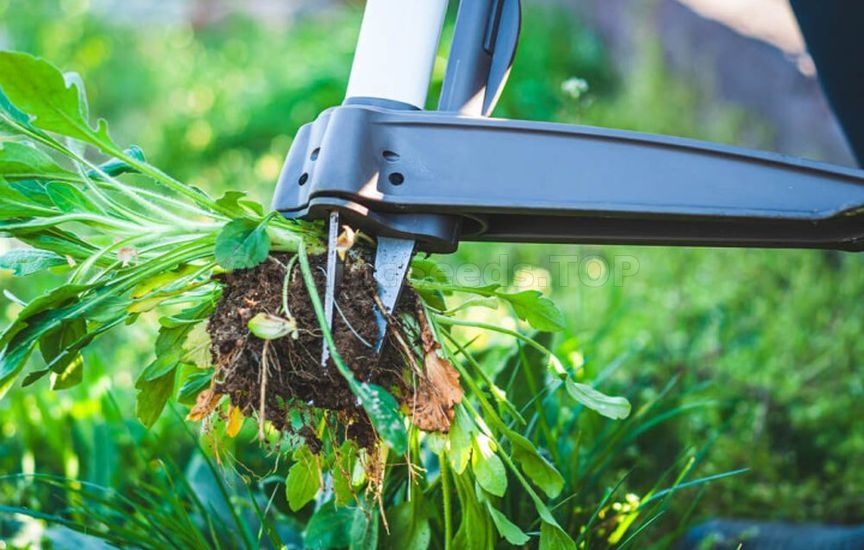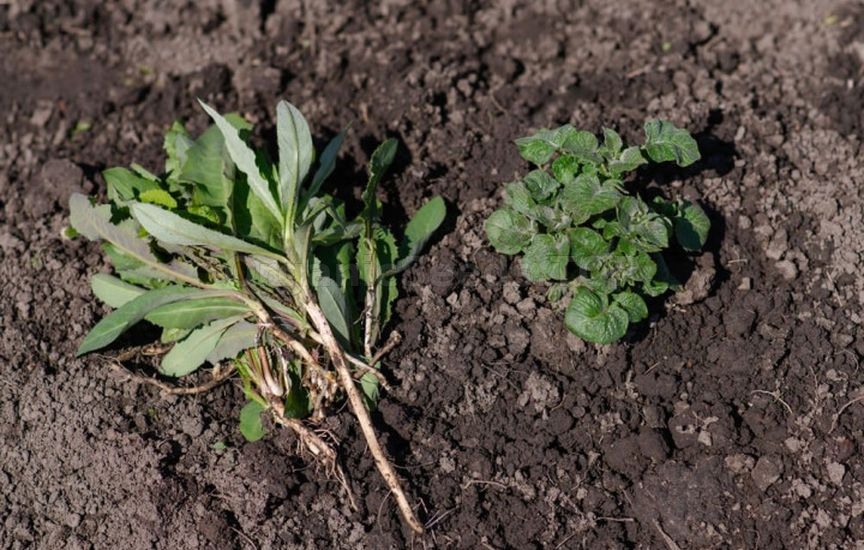Tired of pulling weeds? Are you even doing this job correctly? The fact is that there are weeding rules that will save you from constantly bending over garden beds and flower beds.

Rain is pouring, the sun is getting hotter every day – and now more and more dandelions are “decorating” the lawn, and plantings are overrun with lamb’s quarters, horsetail, goutweed… Time to get weeding! But to make it truly effective and not have to repeat it tomorrow or the day after, we recommend following these simple rules.
Weeding is vital for garden crops: weeds “steal” nutrients and water from plants, which is especially dangerous for young specimens, and often become a refuge for insect pests and phytopathogens. Some weeds are poisonous and can cause allergic reactions in people. Climbing weeds can directly damage cultivated plants by wrapping around their stems and causing lodging.
Rule 1. Remove weeds when the soil is moist

It’s best to weed after rain or watering, when weeds are easily pulled from the soil. However, there are a few nuances to consider.
If the soil is dense, clayey, and there was a downpour, pulling out unwanted grass will actually be harder, and it’s better to wait until the soil dries a bit. If the soil is loose, weeds are removed immediately after moistening. Owners of light sandy soils can pull weeds at any time.
Before weeding, it’s helpful to loosen the soil a bit to make the job easier.
Rule 2. Pull weeds out with the root

The result of weeding will last longer if the weeds are removed with their roots. Rule 1 helps a lot with this, since it’s easier to pull plants out of moist soil. But not all weeds are that cooperative, so gardeners have two options:
- remove weeds while they’re small and their root system is close to the surface;
- use a special tool that allows you to easily and effectively extract weeds from the ground.

The first option is also valuable because young weeds before flowering are harmless and can’t spread around the plot. But if the thought of pulling out lots of tiny blades of grass is unpleasant, you can wait a bit and, when the weeds get a little stronger, go over the area with a special root remover, fork, or weeding fork, or at least with a regular hoe.
The roots of an adult dandelion can reach 50 cm, lamb’s quarters – 1–1.5 m. But galinsoga, or gallant soldier, usually has roots no longer than 15 cm.
Rule 3. Don’t leave pulled weeds on the bed

It may seem harmless: the plant is already pulled and will soon die. But in fact, it can remain viable for a long time: remnants of its root or fallen seeds will quickly sprout. So don’t pull weeds and leave them right next to the beds, especially if the soil is moist and loose.
If you want to use pulled weeds as mulch, they need to be wilted in the sun away from cultivated plants, and then either chopped or used whole. If the weed has already flowered and formed seeds, it’s better to find another use for it (see Rule 4).
When removing weeds near cultivated plants, try not to damage their roots.
Rule 4. Don’t carry weeds across the entire plot

A very simple rule that many gardeners ignore and then find themselves in trouble: lamb’s quarters, bluegrass, or goutweed mysteriously take over areas where they never grew before. And all because you carried a bundle of pulled plants with flowers or seed pods across the entire plot to the compost pile.
Always collect plant debris in a bucket, wheelbarrow, or bag and only then take it to compost. By the way, weeds can be used differently – for example, herbal infusions are very effective for feeding plants or as natural pest control (from nettle, dandelion, tansy, wormwood, etc.).
Compost that contains mature weeds with seeds will be safe only after full decomposition. In this case, composting must be done anaerobically, without oxygen access. Then all seeds will die. Immature fertilizer must not be applied to beds and flower beds. The same goes for fresh manure, which often contains many weed seeds. It’s better to let the fertilizer decompose so they “burn out.”
Rule 5. Mulch the soil

To weed less often, we recommend using mulch. However, loose natural mulch applied in a thin layer is not the most reliable barrier against weeds. For truly good results, either apply mulch in a thick, dense layer or, if possible, use non-loose materials such as cardboard, which will definitely prevent weeds from sprouting. If that option doesn’t suit you aesthetically, nonwoven fabric or mulching film will help.
Remember, you can also use the weeds themselves as mulch – just dry them thoroughly and make sure they haven’t already flowered and formed seeds.
If you don’t want to weed at all, other plants can help displace weeds – for example, green manure crops sown between rows or around the perimeter of beds, where unwanted grasses thrive most. This method is also useful for protecting soil after harvest. Later, the grown green manure is incorporated into the soil, thereby increasing its fertility.







